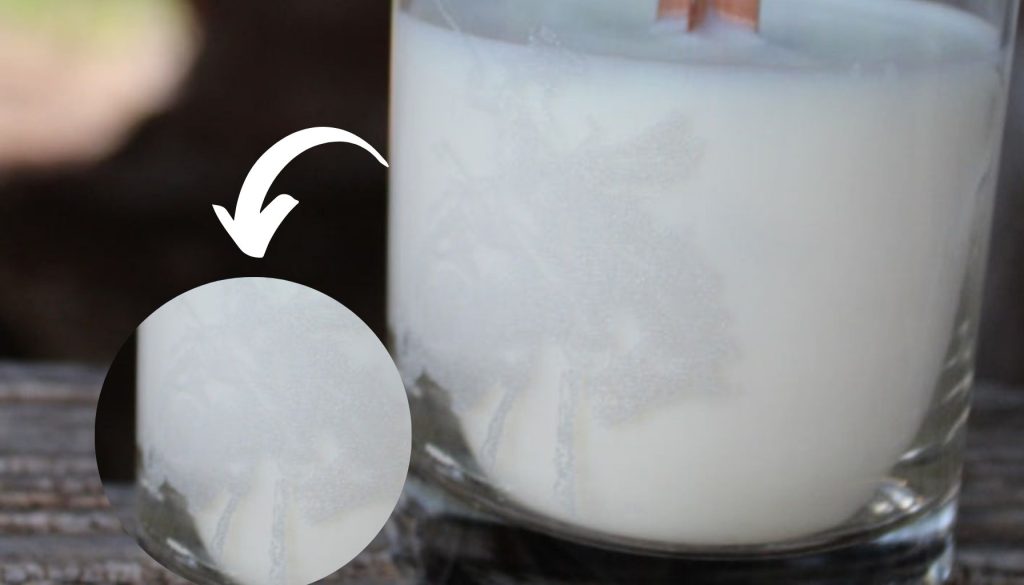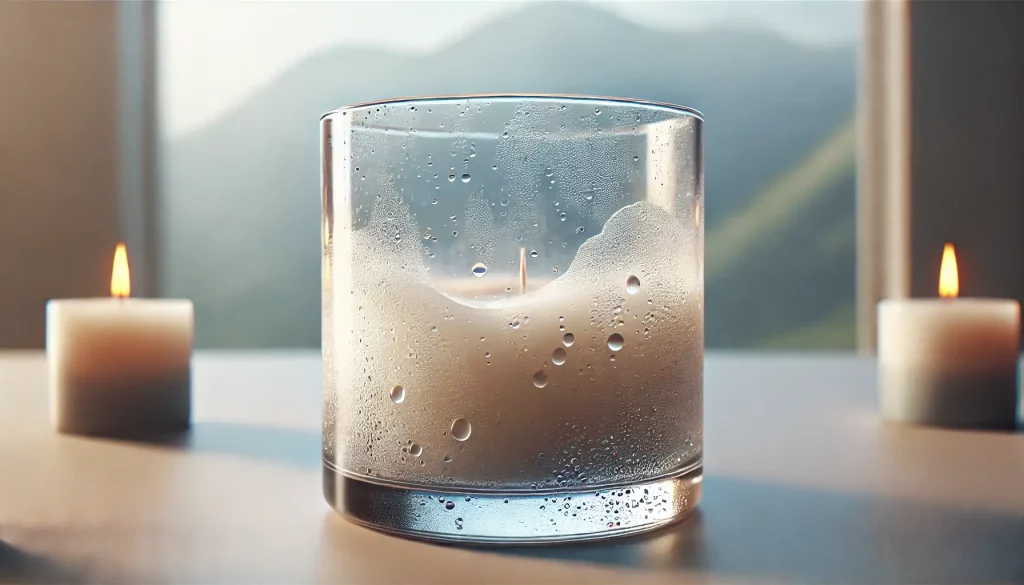Candle wet spots are patches that appear on the sides of a candle. Those spots are caused by multiple reasons, the main one being temperature.
When the wax melts, it naturally turns into a liquid state, but once it is poured into a jar and it cools down, it will start cooling down, and shrinking, or contracting. It is this contraction that slightly separates the wax from the jar, and causes the wet spot.
Those spots don’t have to appear right away, they could show up after a few weeks, and this all depends on the temperature surrounding the candle. Naturally, your candle will be set in a more or less fixed room temperature while it is stored, however, once the candle is shipped out, there will be fluctuations in the temperature, and hence, wet spots will start to show themselves.
Do Wet Spots Affect Candle Performance?
No, they don’t. They are purely an aesthetic issue, that you will find in so many candles, even the ones found in big brands and retail stores. Try not to worry too much about your candle wet spot, and remember that scent is king, and the customer will probably not think about it too much.
How to Fix Wet Spots in Candles?
If you are using a transparent jar and vegetable-based waxes, then you will probably not be able to prevent a wet spot and will have to live with them. However, here are some ways in which you avoid wet spots entirely, given you are willing to make some major changes:
- Change the color of your jar. Transparent jars like to reveal themselves, so if you replace it with a colored jar, the wet spot won’t be visible to the naked eye anymore.
- Change the type of wax you are using, preferably ones that have great glass adhesion properties.
- Change the temperature at which you are pouring the wax into the jar. Try to lean towards the temperature of the room. If it’s a bit colder, then go down 5 degrees, and the other way around if the room is a bit hotter. Don’t forget, the best temperature for pouring the wax, is room temperature.
- Preheat your jars before pouring your wax using a heat gun, or by popping them in the oven for 2 minutes.
I do talk about this more in my candle making course, so if you want to find out more, make sure to check that out.
Remember one thing, and this is something I learned over the years of making candles. Scent is king, and what will bring the customer back, is the aroma of your scented candles. Adhere to safety standards, have a candle with a strong scent throw, both cold and hot, and you should not worry yourself about wet spots.


